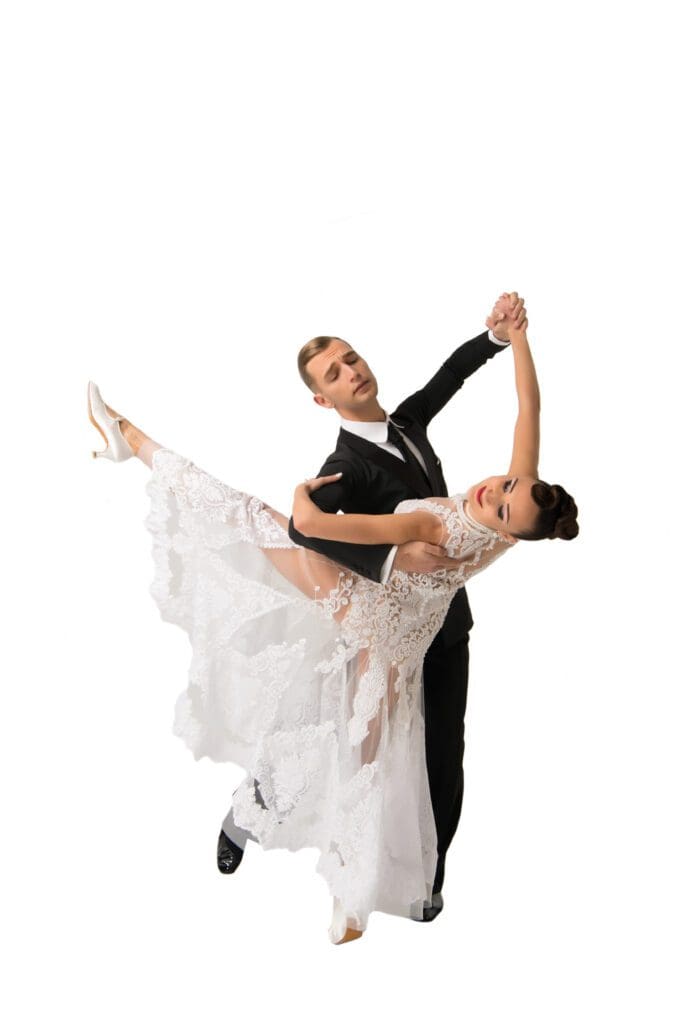Foxtrot
Foxtrot History
The Foxtrot is a smooth, progressive dance characterized by long, continuous flowing movements across the dance floor. It originated in the early 20th century and is attributed to African American communities in the United States.
Early 20th Century:
- The Foxtrot is believed to have been developed by vaudeville actor Harry Fox in 1914. Fox introduced a trotting step to ragtime music in his act at the New York Theater, which quickly gained popularity.
- The dance was initially characterized by a mix of slow and quick steps, which later evolved into the smoother style seen today.
1920s and 1930s:
- The Foxtrot became immensely popular in the 1920s and 1930s, particularly in the U.S. and Europe. It was a staple of the social dancing scene and was danced to the big band music of the era.
- During this time, the dance evolved with more complex figures and a smoother style, moving away from its original trotting steps.
Mid-20th Century:
- The Foxtrot continued to evolve, incorporating elements from other dances like the Waltz. This period saw the development of what is known as the “Slow Foxtrot,” characterized by slow, fluid movements.
- The dance became a standard part of competitive ballroom dance and was divided into the International Style and the American Style, each with its own distinct characteristics.
Modern Day:
- Today, the Foxtrot remains a popular dance in both social and competitive dancing spheres. It is known for its elegance, ease of movement, and adaptability to various musical styles.
- The Foxtrot is often taught as one of the core dances in ballroom dancing classes due to its fundamental principles that are applicable to many other dances.
In summary, the Foxtrot has a rich history that spans over a century, evolving from its original trotting steps to a refined and elegant ballroom dance enjoyed worldwide.
Foxtrot Characteristics
- The Foxtrot is a graceful, sophisticated, and enchanting ballroom dance, celebrated for its smooth, flowing elegance, harmonious blend of slow and quick steps, and versatile adaptability to a wide array of musical styles. It exudes a classic charm and effortless finesse, making it a perennial favorite in the world of dance.
Foxtrot Music Information
Time Signature: The Foxtrot is typically set to a 4/4 time signature, which means there are four beats in each measure of music.
Tempo: The tempo for the Foxtrot varies but generally falls within the range of 120 to 136 beats per minute (bpm). This tempo allows for both the smooth and flowing style of the dance as well as the more energetic and brisk movements.
Rhythmic Pattern: The common rhythmic pattern in Foxtrot music is a combination of slow and quick beats. The basic step often follows a “slow-slow-quick-quick” or “slow-quick-quick” rhythm, aligning with the music’s beats.
Musical Style: Foxtrot music typically has a smooth and continuous flow, with a clear and steady rhythm. The genre of music can vary widely, from traditional big band and swing to modern pop and jazz.
Danceability: The music’s steady rhythm and clear beat make it ideal for the smooth, gliding movements and refined style of the Foxtrot.
